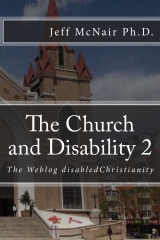"The most frequent method is through assimilation from the environment. The things that are taken for granted by the people round about us, the points of view that are commonly held by our friends and acquaintances are illustrations of environmental attitudes which are frequently assimilated without our having been conscious of them.
A second and perhaps the next most common method of acquiring attitudes arises from emotional effects of certain kinds of experiences. In general if one has had satisfying experiences in a particular connection, he develops an attitude favorable to some content or aspect of that experience while if he has had an unsatisfying effect from the experience, his attitude may become antagonistic.
The third most frequent method of developing attitudes is through traumatic experiences, that is, experiences which have had a deep emotional effect. Thus, a youngster may develop overnight a great fear of dogs from one experience in having been bitten by a dog.
Finally, a fourth method of developing attitudes is through direct intellectual processes. In some cases when we see the implication of a particular object or process, we are led to develop an attitude favorable or unfavorable to it from the knowledge which we gain from this intellectual analysis". . . Unfortunately, attitudes formed through definite intellectual processes are not so frequent as those obtained in other ways. Of these four methods of developing attitudes, the third is not likely to be useful to the school. Traumatic experiences involving the intense emotional reactions are too hard to control to be used systematically in an educational program. Hence, schools will have to lean heavily upon the use of a process of assimilation from the environment, of developing attitudes through emotional effects of particular experiences, and through direct intellectual processes" (p. 76).
Once again, attitudes develop through
- a process of assimilation from the environment
- emotional effects of particular experiences
- direct intellectual processes
In thinking about societal attitudes toward persons with disability as reflected in societal constructions, the attitudes developed in different people in different ways. Traumatic experiences must also be factored into the mix, although we cannot use them necessarily to develop attitudes. I would suspect that by and large, most attitudes are developed through assimilation from the environment. Among some informed groups, direct intellectual process has probably had some impact. Some people might have had emotional effects from experiences, but using myself as an example, experiences might cause negative effects, or might cause one to devote his life to these persons with disability (in their inclusion, education, etc.).
"Several generalizations may be suggested regarding learning experiences for developing attitudes. In the first place, the school and community environment should, so far as possible, be modified and controlled so as to promote desirable attitudes. In many modern communities there is disjunction between the school and the home, the school and the church, the school and the rest of the community with regard to the attitudes that are developed. The environments are inconsistent; values, points of view are taken for granted in the press that are denounced in the pulpit, the values emphasized in the motion pictures are in conflict with those which the school seeks to develop. There is a great need for seeking to modify the environment of the youngster throughout his experience in order to help him develop desirable social attitudes. This means increasing the degree of consistency of the environment and helping to reinforce the emphasis upon social rather than selfish attitudes" (p. 76-77).
As I think through the various environments from which attitudes might be generated, I am not sure which one I would choose as the model I would want to proliferate. School, community, home, church, press, pulpit, to some degree each of these attitudinal repositories beg for the modification and control Tyler alludes to. The church distrusts the public school which distrusts the community and so on. Teacher training becomes more rigorous because the community distrusts the school as it is the teachers' fault children aren't performing as they should. Schools point to homes. Once the appropriate attitude is found, the job is to try to align everyone to that attitude.
Sometimes that alignment can be orchestrated through law, at least aspects can. I can force integration with the hopes that when people are together, attitudes will change to reflect what they learn through the integration experience. Forced integration might be thought about in a variety of ways, but I am thinking about integrating persons with and without disability. As far as the church is concerned, I must rely on the good will of the people. If my church has too much of something different, I will simply go to another church which has more of the same that I am used to. People who are willing to take the risk of having their attitudes changed can often be the ones to lead the way in altering social constructions, however, that doesn't always work as they are typically marked as being different (meaning open minded) and not all open mindedness is good.
Even within families, the experiences you might think would soften attitudes toward or at least cause dissonance with the societal construction aren't always perceived that way. Rather than seeing the construction as unreflective of reality, they define the situation with the construction until they are beaten into submission by the dissonance between the construction and reality. A price was paid for the information gained from that experience. As long as the experience of disability is deselected or remote, the societal construction is employed unchallenged. The saddest thing, however, is when the construction is embraced by parents and significant others and fed to the person with disability. The negative self-perception the person with disability gains becomes the filter through which they define themselves, their social interactions, their ambitions, and the world.
McNair











No comments:
Post a Comment